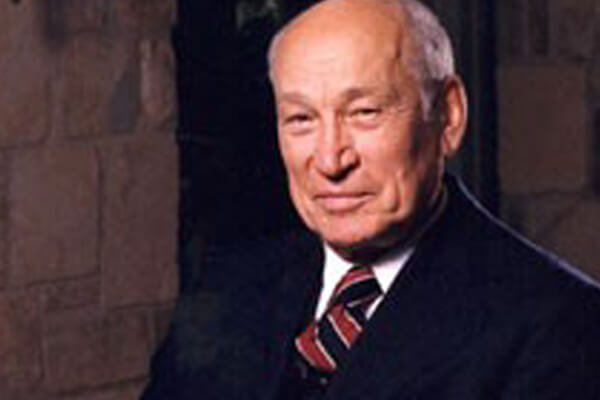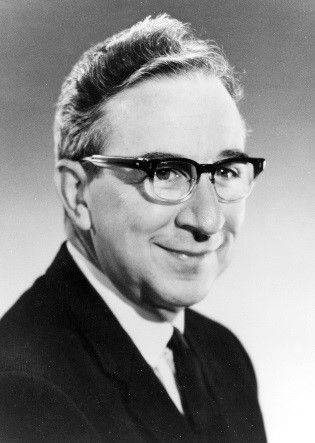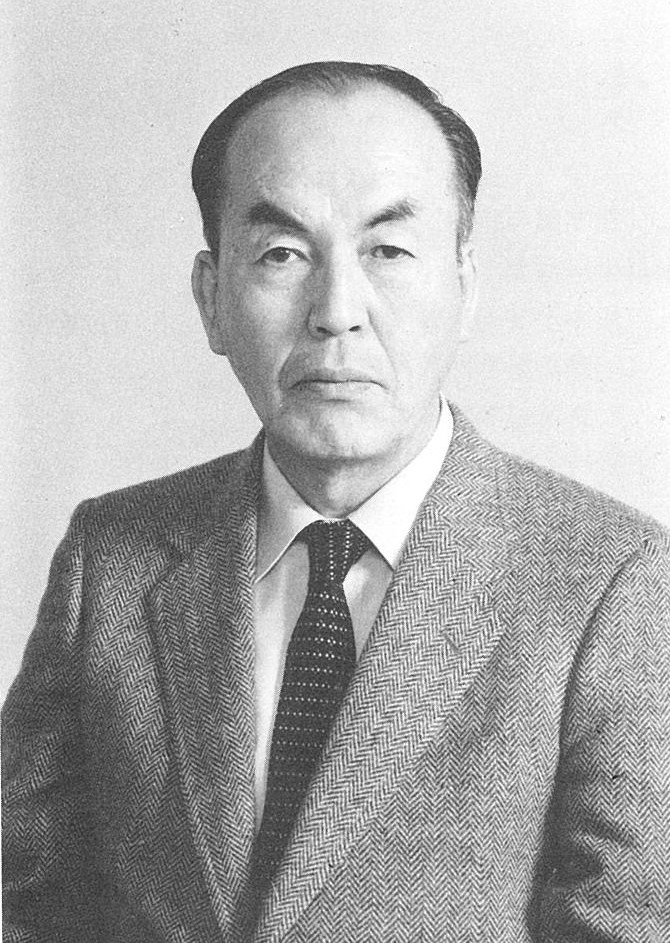The ’50s to the ’70s: AUC unbound
A general consensus among science historians is that the period between the 1950s and the 1970s represented the first “boom time” for AUC. 9
By 1951, no fewer than 70 Spinco Model E ultracentrifuges had been sold, and there would be more than four times that many in use before the end of the decade.

Dr. Arnold Beckman
Jonas Salk and Albert Sabin, who introduced the polio vaccine in 1954, had used an ultracentrifuge to isolate the poliovirus. It’s hard to overstate the impact this vaccine has had—and continues to have—on the lives of millions around the world. Even today, poliovirus remains a useful model system for understanding the biology of other pernicious RNA viruses such as West Nile Fever, SARS and Ebola.
Also in 1954, chemist, inventor of the pH meter (among other analytical instruments), and former Caltech professor Arnold Beckman, recognizing the potential for AUC technology, purchased Spinco. Subsequently, he created the Spinco division of his 20-year-old company, Beckman Instruments.
Not long after that, nearly every biochemistry department in America had an AUC instrument—most of them the Spinco Model E—which in those years was used primarily for routine sedimentation coefficient and molecular weight measurements.
Arnold Beckman’s company—as well as its modern descendant Beckman Coulter Life Sciences—would emerge as an undisputed leader in AUC technology worldwide, a position it still holds today.
Schachman in Awe
Beckman, however, was not the only one who deserves significant credit for AUC’s “boom time” in the 1950s. Among many others, he shares that honor with biochemist Howard K. Schachman, who, in 1948, had just joined the faculty at Berkley, which, coincidentally, was less than 400 miles from Beckman Instruments in Pasadena. (That would not be the only AUC-related coincidence linking these two celebrated scientists.)
Schachman, who would decades later write about his “love affair with the ultracentrifuge10,” played a central role in encouraging Ed Pickels at Spinco to experiment with refinements to the ultracentrifuge, such as adding absorption optics—an early version of which was used by Svedberg 30 years before.
Schachman was likewise instrumental in encouraging the integration of a monochromator, and later to suggest incorporating a Rayleigh interferometer. Thanks in part to these adaptations to AUC technology in the 1950s, Schachman himself would eventually play a key role in the discovery of ribosomes, which was an invaluable step forward in our ability to decipher how proteins are synthesized.

Portrait of Howard Schachman
The second Beckman/Schachman coincidence can be traced back to Schachman’s honeymoon in San Francisco in 1945. While there, he did some research on the feasibility of getting an ultracentrifuge built for the United States Navy. That led to his meeting a man by the name of Morris Hanafin, who was also looking for someone to build an ultracentrifuge. Based on what he’d already learned, Schachman told Hanafin the man he needed to contact was … Ed Pickels.
That fateful meeting, then, set the wheels in motion for Hanafin and Pickels to join forces and create Spinco—a company that would be purchased by Arnold Beckman less than a decade later. And a company that would ultimately produce the instrument that would become the object of so much affection from Schachman.
Of course Schachman wasn’t the only one in the 1950s who was experimenting with variations on basic AUC techniques.
In one creative adaptation in 1958, Matthew Meselson and Franklin Stahl used cesium chloride at high concentration to separate nucleic acids with an ultracentrifuge, enabling an elegant resolution of the DNA replication problem. Using a density gradient in the Spinco Model E analytical ultracentrifuge to prove the semiconservative mechanism of DNA replication is widely considered “the most beautiful experiment in biology.”
Though Schachman no doubt agreed with that description of the experiment, he didn’t necessarily agree with Meselson about AUC protocols.
While on sabbatical at the Marine Biology Laboratory in Woods Hole, Massachusetts, Schachman encountered a student who had also studied with Meselson. Much to Schachman’s bewilderment, this student appeared to be terrified by the ultracentrifuge. The root cause of this fear turned out to be Meselson’s refusal to let his students anywhere near his ultracentrifuge for fear of the calamities that might ensue.
Chagrined that anyone would feel that way about the technology he loved so much, Schachman didn’t hesitate to provide his students with hands-on experience using the AUC, writing later that he was confident that Meselson’s concerns about students damaging the instrument were unfounded.
The ultimate expression of Schachman’s affection for AUC would appear in 1959, with the publication of his book Ultracentrifugation in Biochemistry. This 272-page textbook would go on to become the new bible of AUC, eclipsing the book Schachman himself had called his AUC bible, The Ultracentrifuge by Svedberg and Pederson.
Publication of Schachman’s textbook marked a fitting end to a momentous decade in the history of AUC. Throughout the 1960s, Schachman and others—including Jack Williams, David Yphantis and K.E. van Holde—used AUC to do groundbreaking work. Throughout what would later be called a “turbulent decade,” our knowledge of proteins, ribosomes, DNA and viruses was dramatically expanded and refined.
Solutions to Analytical Challenges
Another significant milestone in the history of AUC came in 1962 with the publication of Mathematical Theory of Sedimentation Analysis by Hiroshi Fujita.
Only a few years before, Fujita had solved the long-standing problem of how the combined effects of diffusion and the concentration dependence of a solute's sedimentation coefficient determine the shape of a sedimenting boundary.
Fujita’s first monograph was widely considered the standard work on mathematical analysis of ultracentrifugation experiments for the next 13 years. It would evolve significantly only in 1975—with publication of Fujita’s Foundations of Ultracentrifugal Analysis.

Portrait of Prof. Hiroshi Fujita
Thanks in large part to Fujita’s work on the analysis of sedimentation experiments, AUC experienced only upward momentum in the 1970s. By 1980, there were an estimated 2,000 AUC instruments in use worldwide.3
It became a commonly used technique for assessing the solution molecular weight of biopolymers, as well as the molecular complexes they formed. Researchers also relied on AUC for determining the homogeneity and shape of these biomolecules and/or complexes—and to characterize aggregation properties with themselves (self-association) or other components (hetero-association).11
Unfortunately, Svedberg would not live to witness such widespread use of the technology he invented decades earlier. He died in his home country of Sweden in 1971 at the age of 87.
On the other hand, Svedberg was spared from watching the waning of AUC’s influence in the early 1980s.
Because in only a few short years, AUC’s upward momentum would start to decelerate.
3 Serdyuk IN, Zaccai NR, Zaccai J. Methods in molecular biophysics: structure, dynamics, function. 1st ed. New York (NY): Cambridge University Press; 2007.
9 Harding SE. Analytical Ultracentrifugation and the genetic engineering of macromolecules. Biotechnol Genet Eng Rev 1993;11:317-356.
10 Schachman H. Still looking for the ivory tower. Annu Rev Biochem 2000;69:1–29.
11 Berkowitz SA, Philo JS. Characterizing biopharmaceuticals using analytical ultracentrifugation. In: Houde DJ, Berkowitz SA, editors. Biophysical characterization of proteins in developing pharmaceuticals. Waltham (MA): Elsevier; 2015.

